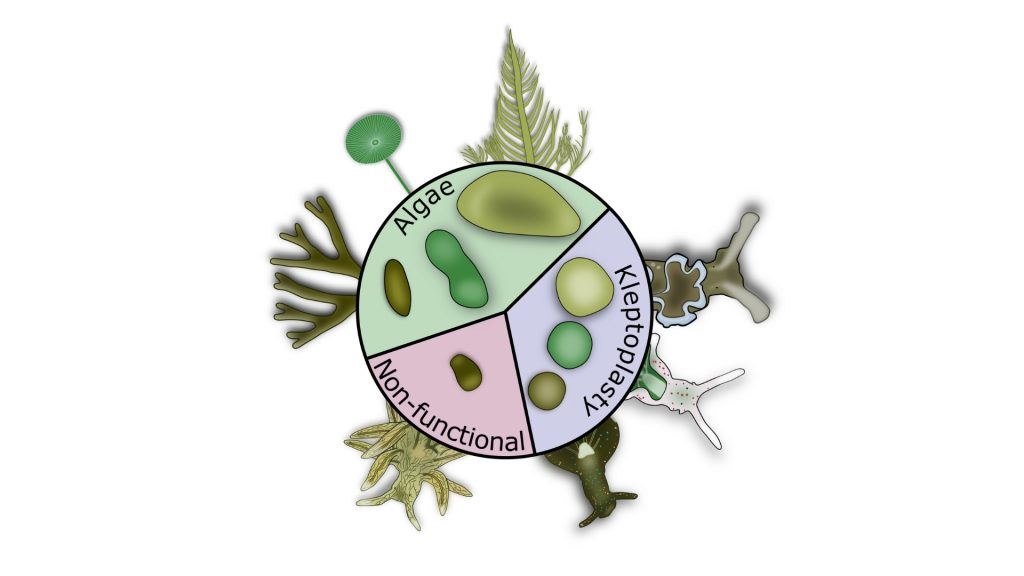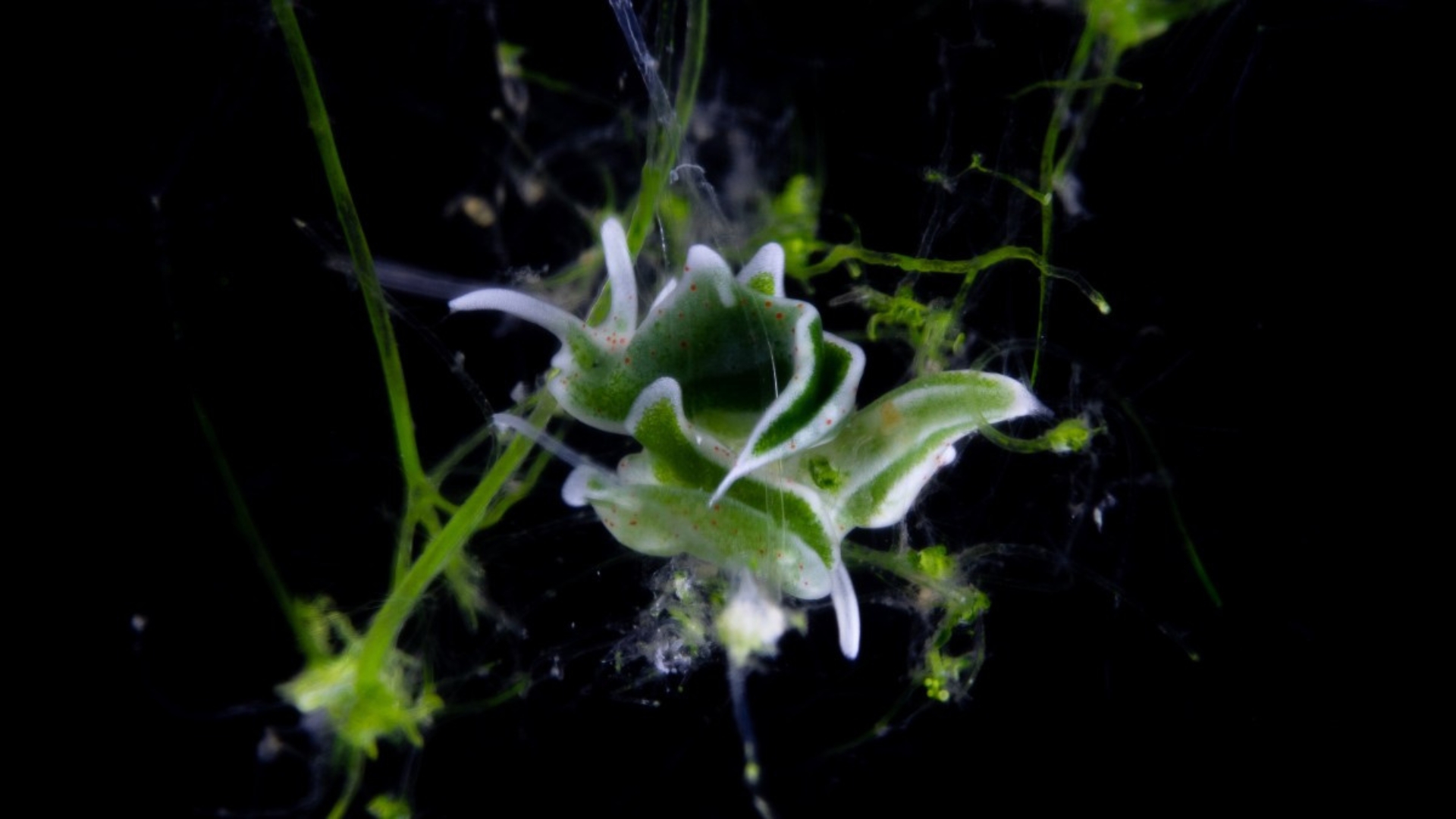Vesa Havurinne, Heta Mattila, Paulo Cartaxana, and Sónia Cruz, researchers at CESAM/DBIO, together with collaborators from the University of Turku, Finland, have published a study in the journal Communications Biology showing that a common light acclimation mechanism, known as “State Transitions” — which allows green algae to adjust light absorption in response to spectral changes in incident light — is absent in an order of green macroalgae: the Bryopsidales.
Bryopsidales are part of a larger group of algae, Ulvophyceae, that contains species commonly used as food source by very peculiar animals, photosynthetic sea slugs (Sacoglossa). These animals specifically steal chloroplasts from their algal prey and maintain these alien organelles, called kleptoplasts, functional inside their cells for weeks and months in a process known as kleptoplasty. While the lack of state transitions in sea slugs containing Bryopsidales-derived kleptoplasts came as no surprise in this study, the lack of state transitions in sea slugs feeding on other ulvophyte algae that did exhibit strong state transitions was a peculiar finding.
Further investigation revealed that the loss of state transitions in the sea slugs happens immediately upon incorporation of the kleptoplasts. Using confocal microscopy, the chloroplast-to-kleptoplast transition was shown to alter the structure of the chloroplasts dramatically; the chloroplasts in the ulvophyte alga Acetabularia acetabulum exhibited highly diverse shapes and sizes, whereas the kleptoplasts of the sea slug Elysia timida were always highly spherical and seemingly smaller in size.
Experimental manipulation of A. acetabulum chloroplasts to a more spherical shape also resulted in the loss of state transitions, which suggests that the structural changes to the chloroplasts are the overarching mechanistic reason behind their loss in the sea slugs. Other sea slug-prey algae combinations were also inspected under the microscope, which revealed that all kleptoplastic sea slugs enforce a remarkably spherical shape of their kleptoplasts, indicating that it is a fundamental property of functional kleptoplasty in sea slugs.

Figure legend: Major differences in chloroplast shapes between Ulvophyceae macroalgae and both functional and non-functional kleptoplast-bearing sea slugs.
